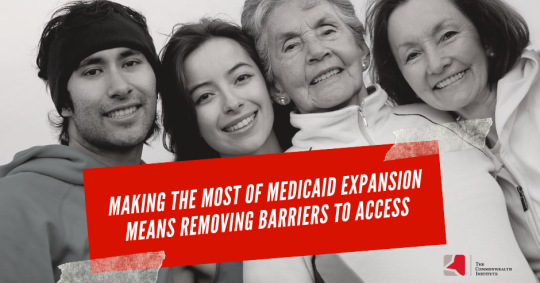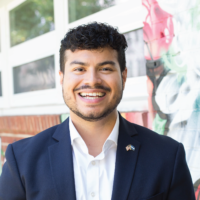May 14, 2019
New Medicaid Data Tells Story of Success and Opportunity: Update
This is an update to an April “Half Sheet” post which incorrectly stated that the Charlottesville/Western, Roanoke/Alleghany, and Southwest regions all have lower expansion enrollment than what would be expected. In correcting our analysis, we have found that only Northern Virginia has enrolled below what could be expected based on its uninsured population.
All Virginia expansion enrollment data current as of 5/3/2019.
The decision to expand Medicaid in Virginia was a watershed moment for low-income adults and families in need of quality, comprehensive health coverage. Expanded coverage began on January 1, 2019 with enrollment starting in November of last year. While this was a major policy win for health advocates, the uptake and enrollment of Virginians in Medicaid will ultimately determine the success of expanding eligibility. The Department of Medical Assistance Services (DMAS) has provided some enrollment data to the public via an “Expansion Dashboard”. Additional vital information, such as enrollment data by race, has not yet been made available. As we await that information, which will allow a fuller look at whether eligible Virginians from every community are learning about and getting connected with the new health coverage options, we have summarized some of the early takeaways:
272,527 Total Medicaid Expansion Adults Enrolled
The total enrollment numbers at this point have surpassed early DMAS projections. The state estimated average monthly enrollment for those newly gaining coverage due to expansion from January to June to be less than 200,000 adults. Methods such as auto and expedited enrollment of certain populations known to DMAS, like parents of children already enrolled in Medicaid, and outreach by partner organizations are likely part of this success coupled with high demand for health coverage.
96,109 Parents Enrolled Through Medicaid Expansion
Research shows that as parents gain health coverage, children are more likely to be covered as well. In 2016, 4.3 percent of children nationwide were uninsured; of those children, 57 percent were eligible but not enrolled in Medicaid or the Children’s Health Insurance Program (CHIP). Parents may learn of coverage options for their children during the application process and eligibility for children’s coverage is usually higher than adult coverage; meaning if a parent is eligible their children likely are too. Expanded adult eligibility will likely lead to higher health coverage rates for uninsured children in Virginia.
We also see evidence that the opposite is true. When adults lose coverage, children also go uninsured, especially in non-expansion states. In 2017, coverage losses for children were concentrated in states that did not expand Medicaid coverage for adults under the Affordable Care Act (ACA) Between 2016 and 2017, uninsurance rates for parents remained steady in expansion states but rose significantly in non-expansion states. As Virginia awaits federal permission to impose work reporting requirements and additional costs on some parents who receive Medicaid, it is important to consider the ways that pushing adults off health insurance may also harm Virginia’s children.
77,148 Young Women (Aged 19-34) Enrolled
This group has accounted for more than a quarter (28%) of all new enrollment. Providing comprehensive health coverage to women of all ages and particularly young women could lead to better maternal and infant health outcomes if they choose to have a child. This coverage can help identify and manage long-term conditions such as hypertension, obesity, and diabetes that can make childbirth more risky. This coverage is especially important for Black mothers who have higher rates of maternal and infant mortality than women of other racial backgrounds. And with access to comprehensive health coverage, women can better assess their contraceptive options with a primary care physician, helping in their family planning. In addition to reproductive health, increased access to health care is especially beneficial for women in a number of ways. The ability to diagnose and manage long-term illness and having access to regular breast and ovarian cancer screenings can help more women live a healthier more fulfilling life.
Medicaid Expansion Enrollment by Region
While overall enrollment totals look promising, it appears that one region is lagging behind other parts of the state. When looking at the most recent data, Northern Virginia has a lower number of enrollment than what could be expected.
According to 2017 data, there were about 56,000 people uninsured and likely to qualify for expansion in the region based on age and income. When compared with the close to 53,500 people enrolled in expansion coverage in the region – a difference of 2,500 – it appears there may still be more work to be done to enroll the uninsured in Northern Virginia. This estimate likely understates the number of people who are still uninsured and could qualify for coverage because total enrollment includes individuals who had been previously insured through other avenues, such as the health insurance marketplace or an employer health plan.
A possible explanation for this apparent gap in enrollment could be due to the region’s large immigrant population. The estimates count all uninsured regardless of immigration status, meaning there are likely thousands of uninsured individuals living in poverty that expansion simply will not help. Proposed changes to federal immigration law, the public charge policy specifically, may also be contributing to lower than expected enrollment in the region. Individuals who fully qualify for Medicaid and are in a family with at least one non-citizen may be wary of applying for coverage due to fear of it being used against their non-citizen family members. A strong outreach campaign is needed in order to combat misinformation and fear concerning the proposed change in public charge policy.
Additionally, immigrants face an additional barrier to coverage in the commonwealth. That’s because Virginia is one of only six states where a lawfully present immigrant must establish a 40-quarter (10 year) work history, concurrent with the federal five year requirement, before qualifying for Medicaid. Though work quarters of spouses and parents can be included in the calculation, single immigrant adults without parents in the United States have to wait 10 years or more for health coverage. This rule means there is an uninsured population that would be eligible for coverage in 44 other states and Washington, D.C. but has been barred access to it in Virginia due to state policy.

Conclusion
Overall, expansion enrollment data offers a promising snapshot of the benefit that Medicaid expansion has already provided to Virginia families. The auxiliary effect of enrolling more children in health coverage and providing the opportunity for healthier mothers pre- and post-pregnancy mean a better start for families who call Virginia home. Further analysis will need to be conducted in order to evaluate enrollment and uptake by race, to determine the success of campaigns to advance health equity and enroll people of color in Virginia. Regional data appears to show further enrollment work needs to be done in certain areas in order to ensure more Virginians gain access to quality health coverage. Enrollment efforts can be strengthened by having outreach materials and staff that can competently address the concerns caused by the proposed changes to public charge. And doing away with the 40-quarter rule can help more people gain access to coverage. We call on advocates and stakeholders to continue their outreach efforts and oppose barriers to Medicaid coverage to ensure all Virginians who are eligible have the opportunity to enroll.
Category:
Health Care
